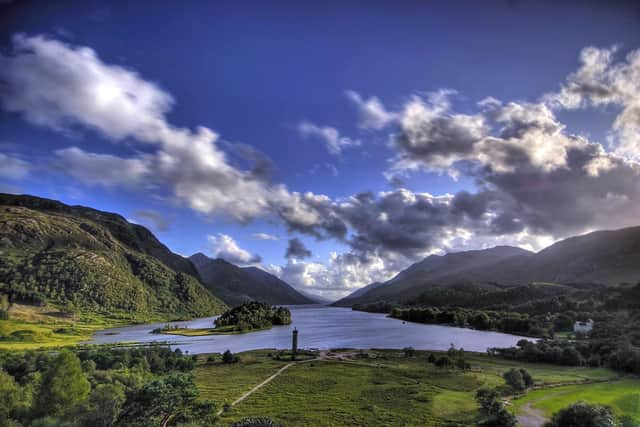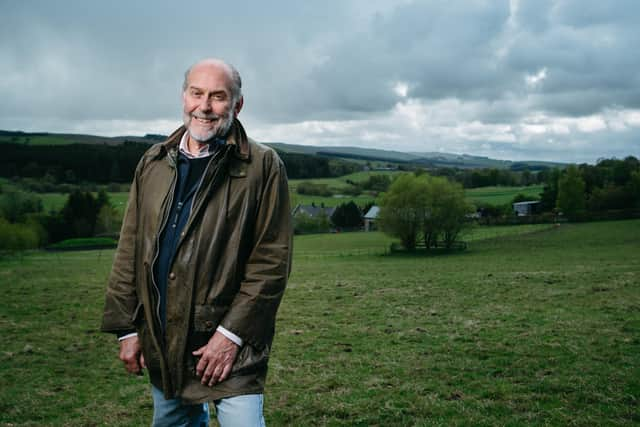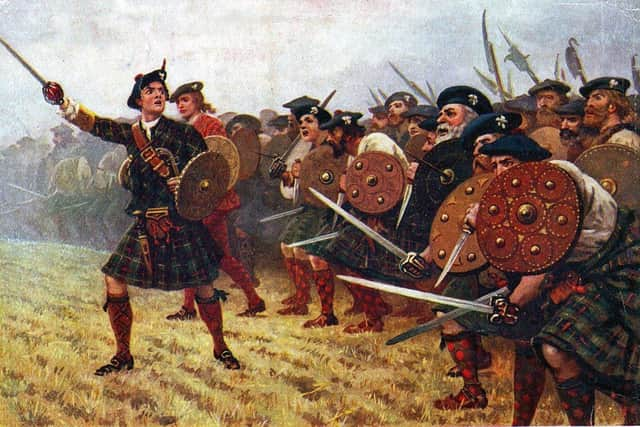Exclusive:Finding ghosts and deep courage on the War Paths of the Scottish Highland clans
War Paths, Walking in the Shadows of the Clans, follows the writer on 12 journeys into the battlefields, muster points and landing places that became turning points in Scotland’s story as he tracked the courage, psyche and military skill of those who fought to protect their people, their land, culture and families.
Destinations include the Lewis beach where a group of Fife lairds – dubbed The Gentlemen Adventurers – invaded to seize Macleod land for the Crown in 1613 and the waters of Loch Shiel, which Prince Charles Edward Stuart and his retinue travelled to Glenfinnan in August 1745 to witness the raising of the Jacobite standard before hundreds of gathered clansmen and their leaders.
Advertisement
Hide AdAdvertisement
Hide AdMoffat also ventures into the Second World War to follow the Cameron Highlanders through the cornfields of Northern France in May 1940 in an operation that came some 200 years after Clan Cameron, their heads protected with small shields and armed with broadswords, charged for the Jacobites through the yellow stubble at the Battle of Prestonpans in September 1745.


The routes, both political and physical, to the battles of Killiecrankie, Sheriffmuir and, of course, Culloden, are all traced, with the writer finding himself, on more than one occasion, left with a deep sense of presence of those who fought and fell for their cause.
Moffat said: “It kind of encouraged me when things got difficult. When you are on the walk and you are alone, you get into the zone, you are really not thinking about anything else other than the past, the geography and how people negotiated it.
“It is actually a very immersive process. When I started this project, I didn’t really think it would be like that. That is when you really get a sense of the past – when you don’t have the distractions of the present.”
Moffat, as he moves, seeks to immerse himself in both the logistics of battle and the mindset of those fighting it, often referring back to ancient Gaelic song and poetry to distil a deeper sense of place and mission as experienced at the time. Highlanders used to describe English as a “thin” language, Moffat added, with Gaelic giving a deeper, truer insight into the forces at play.


At Culloden, Moffat writes of the ‘Army of the Dead, when soldiers ahead of the battle summoned their ancestors in the ancient ritual of sloinneadh – or the naming of the names –when fighters recited the names of their forefathers, going back multiple generations, “to centre themselves, to remember who they were, where they had come from and what they had come to the moor to fight”.
He added: “Men were summoning ghosts, to add to their ancestral courage, their fabled prowess to their own.”
This ritual was one of Moffat’s early inspirations for the book and one which he came across from a friend, Donnie Campbell, whom he met while on a Gaelic immersion course at Sabhal Mòr Ostaig in Skye.
Advertisement
Hide AdAdvertisement
Hide AdMoffat said: "I thought that was really powerful – and different. Lots of men pray because you get close to your god and others will joke or sing, or swear at the opposition. These men didn’t do that, they gathered themselves around their ancestors. That was the reason they fought. It was for their land, for their people, the dùthchas – the home.


“It is something that ripples through modern Highland culture. When people meet and they don’t know each other, they don’t say ‘where do you come from or what do you do?’ They say ‘who are your people?’”
One of the strongest experiences encountered by Moffat was at Sheriffmuir, where a 7,000-strong Jacobite army took on 3,000 Government army soldiers in the only major engagement in Scotland of the 1715 rising.
Sitting by a standing stone that later served as a Jacobite muster point and before being smashed up by English navvies building the nearby railway in the 19th century, he took in the wide clearing of land that served as a battleground some 300 years earlier where hundreds of men on each side were killed or wounded.
With his ears tuned for the “echoes of battle, the roar of war cries in a thousands throats, the clash of sword on a shield and the brosnachadh, the songs inciting men to battle”, the writer instead heard silence – and felt a powerful presence of many fallen men.


He wrote: “The landscape seems to me to be at peace, to have healed and in three centuries covered over the horrors of war with the precious, delicate beauty of the heather, the blaeberries and the fragile. tissue-like peeling bark of the silver birches.
"At Prestonpans, roads, railways, pylons and houses had been built over all that ancient violence. But here Mother Nature had dressed the wounds of warfare and given the men who died a soft and beautiful grave.
“Whoever raised the standing stone smashed by the English navvies knew that this was a sacred place thousands of years ago, a high plateau where the sky gods were close and spirits flew in the pure upland air.
Advertisement
Hide AdAdvertisement
Hide Ad"And on that sun-bathed, fresh morning, along in the clearing, I felt their presence and also the wraiths of the MacRae dead and the other clansmen who fell. That is not a sentence I am embarrassed to write. Not everything can be explained. A sense of history is not always rational, a matter of ascertaining the facts, getting them in the right order and applying a little analysis. Understanding the past is more complicated, more spiritual.”
- War Paths, Walking in the Shadows of the Clans, by Alistair Moffat is pubished by Birlinn and available now.
Comments
Want to join the conversation? Please or to comment on this article.